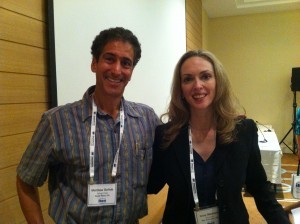How to create an original call and response chant
|
|

Greetings teachers (that includes principals, librarians, parents and grandparents), With the start of school, it’s time to put an extra bounce in our step. Before we dive into creating your rhythmic call and response phrase, let’s consider the words of three jazz legends. For me, these quotes inspire teaching and learning at all levels. One, two…Count-it-off! Ella Fitzgerald (“First Lady of Song”): “Just don’t give up trying to do what you really want to do. Where there is love and inspiration, I don’t think you can go wrong.” Miles Davis (trumpet): “Don’t play what’s there, play what’s not there.” Stan Getz (saxophone): “There are four qualities essential to a great jazzman.* They are taste, courage, individuality, and irreverence.” (*Observation: We are now in an age of great jazzwomen too: drummers Terri Lyne Carrington and Cindy Blackman Santana, violinist Regina Carter, etc.) Now, here’s a way to create a rhythmic call and response phrase to INSTANTLY focus children’s attention–in class, in the library, at home, even over the school intercom! When teachers clap their hands in this pattern: CLAP, CLAP, CLAP-CLAP, CLAP! and invite students to echo the pattern, that’s a kind of call and response. Here are the musical notes for this rhythm.
1) Ask students for a “blend,” i.e. two consonants written together such as BR-, FL, TW, etc, Let’s say they settle on ZL-. 2) Now ask for three different vowel sounds. It’s ok to write these sounds in different ways for clarity, for example OH (for O), EE (for E), and OO (for U). 3) Now combine the blend (ZL) with the first two vowel sounds: ZLOH, ZLEE. Congrats! You’ve just created the first half of your jazz phrase. 4) For the second part, combine the blend with all three vowel sounds in turn: ZLOH-ZLEE, ZLOO. 5) Put the first and second parts together, and you’ve got a simple yet original phrase to call out: ZLOH, ZLEE, ZLOH-ZLEE-ZLOO! Whatever your chant, train your students to repeat it and you’ll have their attention instantly! Of course, it’s ok to change the blend. For example, you can switch to FL to get FLOH! FLEE! FLOH-FLEE-FLOO! For laughs, add a Y thereby changing the vowel sounds to diphthongs: FLOY, FLEEY, FLOY-FLEEY, FLOOY! Maybe tack on another blend such as NG to the ends: FLOHYNG, FLEEYNG. FLOYNG-FLEEYNG, FLOOYNG! No shortage of possibilities. Remember, the more you “call” your phrase with conviction and a straight face, the more your elementary school students will enjoy chanting the “response.” Chances are they won’t even notice that this is an exercise in phonemic awareness : ) Keep groovin’, and enjoy the beginning of school! |
|


